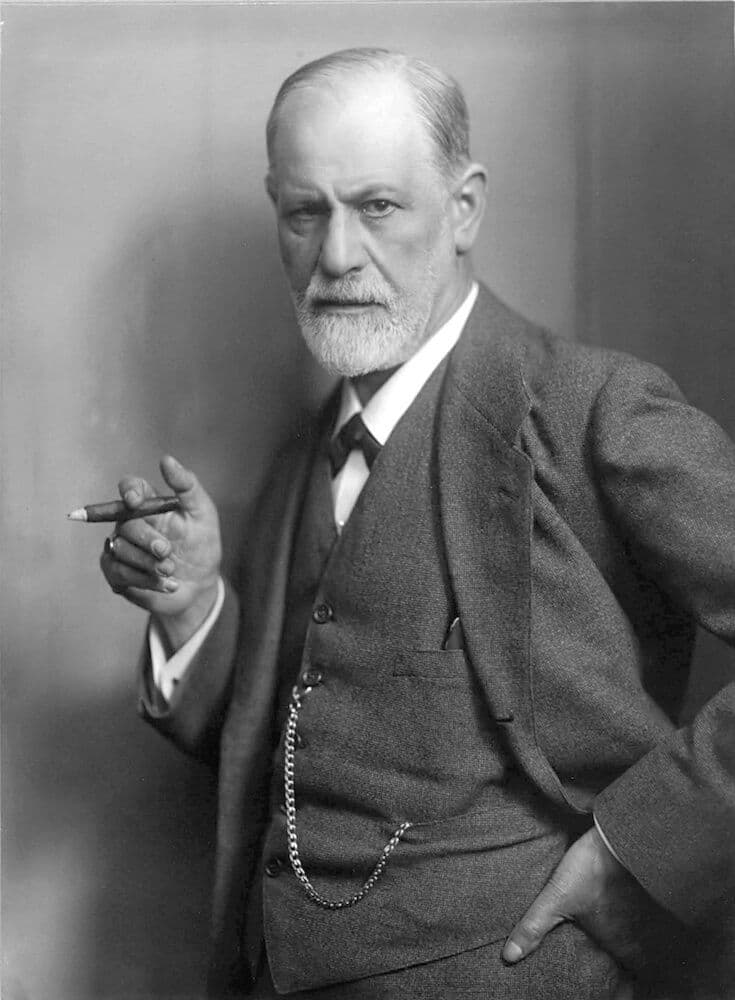Sigmund Freud was born in 1856 and died in 1939. He would be over one hundred fifty years old as of 2022. As we venture further into the 21st century, his name continues to be instantly recognizable, and not solely by people in the fields of psychology and psychiatry. His name is bandied about in common parlance, and a number of his theories have persisted to this day. In this post, I will discuss some of Freud’s best-known theories and how they are understood today; that is, have his theories stood the test of time? If not, how are his theories currently perceived?
Let’s begin with perhaps Freud’s best-known theory, the unconscious. The unconscious is the part of the mind that functions outside of our awareness, where there are thoughts that are too painful or perhaps too overwhelming to process through the conscious mind (the ego, or the present, functioning mind). Freud deemed that unconscious thoughts were manifest through our dreams, jokes, and slips of the tongue, known as the ‘Freudian slip’. The word “unconscious” is easily present in everyday speech. It is used to denote behaviours that seemingly have no present understanding, yet probing to look behind the behaviour will ideally promote meaning and insight.
Dreams, with their typically abstract and disjointed content, were not to be interpreted as they are on the surface, called the manifest content. Freud, rather, believed there was a true meaning, called latent content, behind the dreams that was to be interpreted by various psychoanalytic means. This was expanded upon in one of Freud’s seminal works, “The Interpretation of Dreams”, and further explored by his student and then colleague, Carl Jung. How is this played out in the modern day? Dream interpretation is commonly carried out in current conversation with people exploring the manifest content of dreams as well as what is behind it; that is, looking at the “true” meaning of the dreams. Indeed, one does not necessarily require psychoanalysis to work toward interpreting one’s dreams.
The ego, superego, and id make up the structure of the psyche and make up much of one’s mental life and how it interacts with the outside world. The superego is a harsh and critical moral centre. The id is the source of unbridled drives and instincts. However, I wish to focus on the ego, since this is the most recognized term from Freud’s theories. The ego, according to Freud, is the source of reality, a balancing form between the raw and driven id and the moralising superego. The ego functions as a means to mediate the passions of the id, so one is able to function well in everyday life. This description of the term ego is decidedly different from how it is used today. Not uncommonly, one hears the term ego as predominantly negative, as in one having a “big ego” A big ego denotes one who has an inflated sense of self, self-absorbed, almost identifying the person as narcissistic. This is nowhere near how the term ego was originally defined. In the psycho-spiritual landscape, the term ego is used to denote an attachment to a certain identity. There can be a healthy degree of ego attachment. At the same time, there is the concept of ego death, which is a state to pursue in their hero’s journey, a temporary self-surrender of attachment to identity. This pursuit can lead to states of prolonged contentment.
Freud’s psychosexual stages (psychosexual development) were a seminal part of his psychoanalytic theory. He believed that a child’s sense of self developed along a course in which pleasure is directed toward different parts of the body, parts that derive pleasure, called the erogenous zones. As the child moves through each stage of development and does so smoothly, Freud believed the child would be without psychological issues. Were there frustrations at any point in the stages, thereby getting “stuck” within a stage, or is one so content in a stage that the child does not move through it, which can culminate in a myriad of patterns through life, including maladaptation or suffering, such as depression and anxiety. Freud also believed this would result in a child having a fixation on the body part that is connected to the particular stage. For example, the first stage is the oral stage, which spans from birth to one year. This is a stage that focuses on the mouth as a source of pleasure, such as sucking, biting, or a baby putting anything in sight into their mouth. Freud believed that not moving through that stage would result in fixations later on – for example, smoking and drinking. Naturally, Freud’s oral stage has been neatly translated into what is known as an oral fixation, perhaps saying something such as “he bites his nails so much, clearly he has an oral fixation."
In the anal stage (ages one to three), there is a focus on the early process of bowel and bladder control. Becoming stuck in this stage, according to Freud, results in either perfectionistic and controlling behaviour on one end and at the other end being disorganised and having poor boundaries. Currently, a common term that is used is “anal retentive”, meaning someone who is quite uptight, perfectionistic, and unyielding.
The next stage is the phallic stage (ages three to six). This stage represents a male child’s focus, perhaps even an obsession with his genitals. For girls in this age range, Freud believed that they focused their energies on wanting male genitals, hence the presently used term “penis envy”. In current speak, penis envy is construed to mean women generally envying men. Needless to say, this theory has not held up well over the years, and the modern version of it, as it were, is clearly not taken as a compliment.
The next stage is the latency stage, ages seven to ten. Freud posited that this stage involved a lack of sexual/genital awareness, and instead, children drive their energies toward socializing, learning, and engaging in fun activities. Interestingly, there seems to be no modern corollary to this, perhaps because there is nothing remotely sexually attached to it.
Lastly is the genital stage, spanning from age twelve until death. It is in this stage that the libido reemerges from its symbolic slumber in the latent stage. Freud noted that interest in the opposite sex begins and does not cease. Notably, a primary criticism of this stage is that it completely negates the existence of same sex or non-binary relationships. The genital stage permeates our everyday life, in the media, in academia, and in how we relate to those with whom we are intimate, just to name a few.
Although Freud’s theories are definitely antiquated and out of touch with modern attitudes about sexuality and development, it is imperative to note just how present remnants of his developmental theories remain in our collective mind and language, while simultaneously applying the criticism to them where required. Furthermore, it is also important to recognize the profound influence his work had on the development of modern psychology. His theories laid the groundwork for subsequent approaches to understanding the mind, inspiring generations of psychoanalysts and therapists. For those curious to explore how psychoanalysis continues to evolve and how it can support your personal exploration and growth, connect with one of our experts, Curtis Holt-Robinson, by booking a free 20-minute consultation and start your journey.

